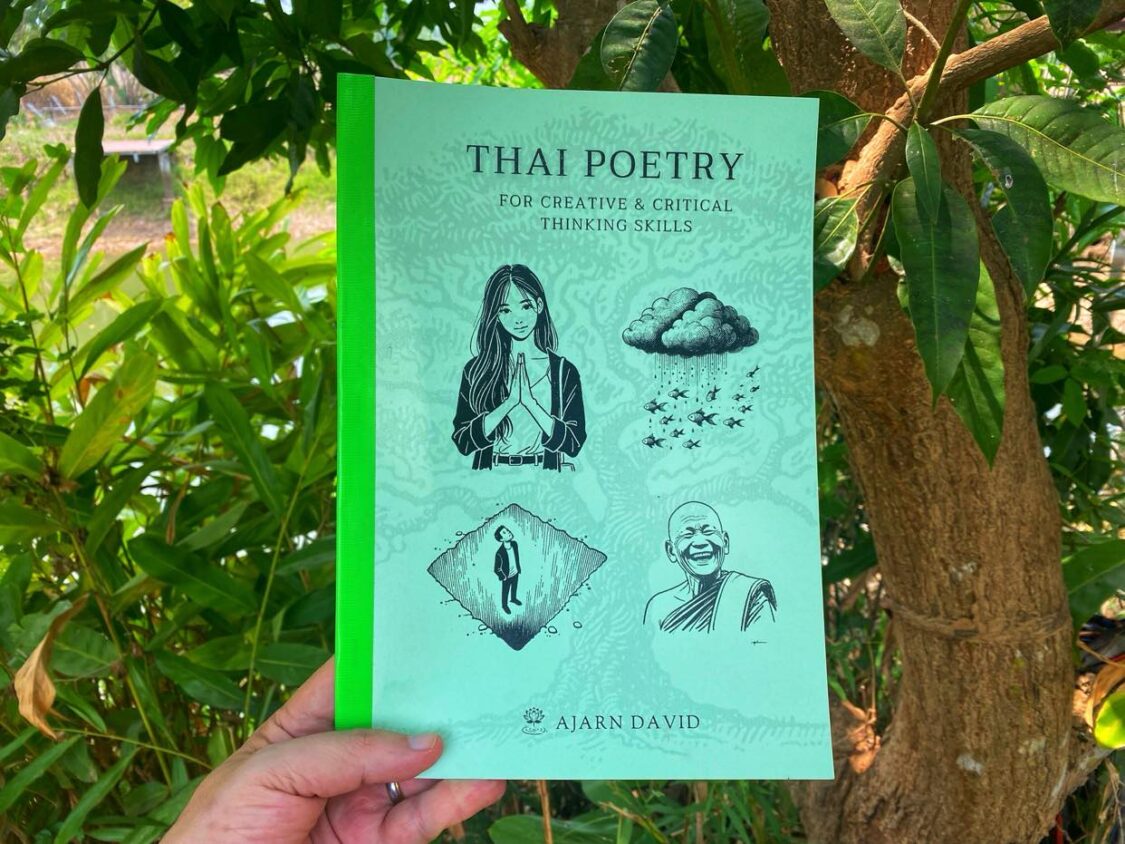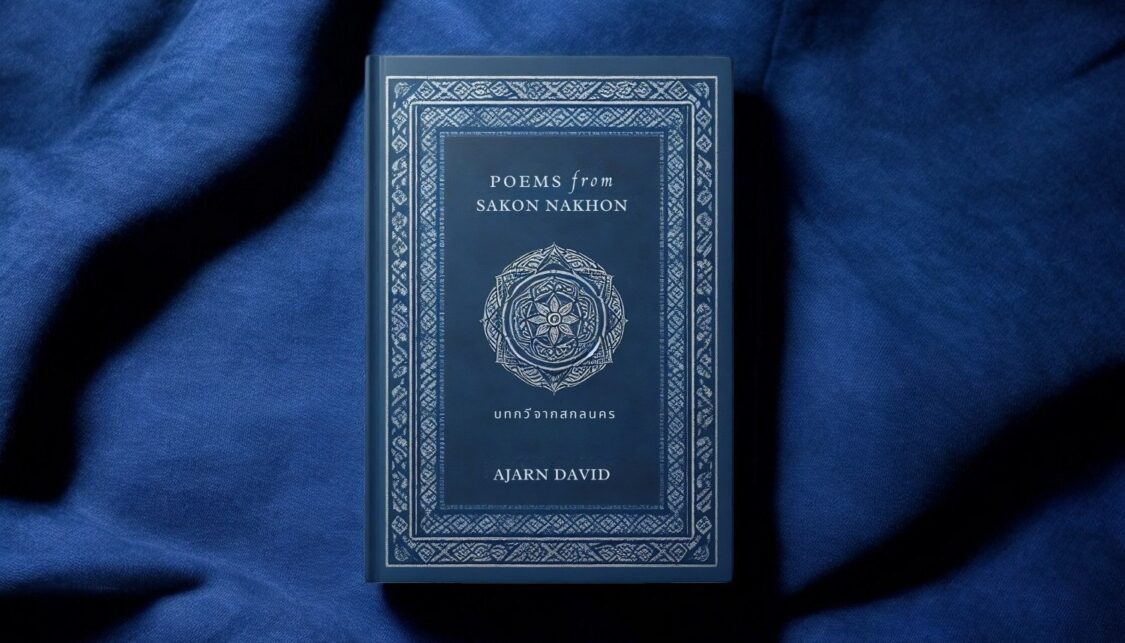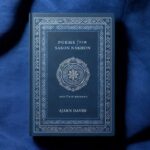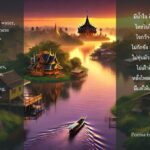Teaching Thinking Skills in Thailand with Thai Poetry

The Sakon Nakhon small press Ysaan Books has just announced the publication of Thai Poetry for Critical and Creative Thinking Skills by Ajarn David, the author of many of the blog posts and listings here at MySakonNakhon.com.
Ajarn David’s new textbook offers a fresh and engaging approach to English language instruction in Thailand — one that moves beyond rote memorization and passive learning. Instead, it empowers students to think critically, express themselves creatively, and explore deep cultural and philosophical ideas through poetry.
Designed for M4 (EP) to university-level students, this illustrated textbook is a bridge between Thai culture and modern educational practices. It provides students with the skills necessary to analyze, interpret, and be creative while strengthening their command of English.
Poetry for Creative & Critical Thinking Skills
Unlike many language-learning books that rely on translated texts, the 34 poems in this collection are original works, drawn from Ajarn David’s “Poems from Sakon Nakhon“ (Ysaan Books, 2025). They reflect the beauty and depth of Thai life, touching on themes of family, nature, tradition, spirituality, and change.
One of the most striking features of this textbook is how it integrates poetry with cognitive skill development. Each poem is not merely a text to be read and understood — it serves as a springboard for discussion, interpretation, and creativity.
Read a few pages from the Teacher’s Edition (with hints and sample answers) above. Click the box in the upper right hand corner to enlarge.
Ajarn David, an experienced university educator in Thailand for over 20 years, is intimately aware of the strengths and weaknesses of Thai English students, and always presents the material in a way that is challenging but not too difficult for most students to understand and engage with.
For instance, “The Quiet Caterpillar” is one of two poems where sample analysis is included so students can get a better understanding of how to think critically and creatively. It presents a deceptively simple scene of a caterpillar’s transformation:
“The quiet caterpillar
crawls and eats, crawls and eats,
fattening itself
on the green leaves,
soaking up
the sun and rain,
then retreating into
its chrysalis
for the final transformation…”
At first glance, this stanza of the poem describes a biological process, but through the book’s guiding questions and exercises, students begin to explore deeper themes of personal growth, change, and resilience.
Thinking Skills with Real World Applications in Thailand
Each Thai poem is accompanied by a range of activities that challenge students to think beyond the words on the page. Interpretive questions ask students to connect the poem’s themes to their own lives, while philosophical and debate prompts such as “Can you forgive an apology that’s not real?” and “Is family love or romantic love more important?” encourage students to express their opinions, defend their viewpoints, and develop their reasoning skills in English.
Students are also encouraged to write their own short poems using techniques like alliteration, free verse, and symbolism. This allows them to experiment with language in a meaningful and personal way in the context of Thailand.
The textbook also connects poetry to real-world applications, such as designing small business advertisements in Thailand, and exploring how poetic themes can be used in branding, storytelling, and conversation.

One of the biggest challenges in using poetry as a teaching tool in Thailand is that many teachers feel unequipped to analyze or teach it effectively. Fortunately, Thai Poetry for Critical and Creative Thinking Skills includes detailed support for Thai educators, making it accessible even to those without a strong literature background.
Help for Thai Teachers
Teachers will find a glossary of literary terms with clear explanations of devices like metaphor, symbolism, and tone, as well as a Teacher’s Edition with sample answers and discussion guides that help them lead conversations with confidence. The bilingual support, including Thai translations where necessary, ensures that students at different proficiency levels can engage with the material.
The book is also highly adaptable. It is written for Thai students with advanced basic to intermediate level of English skills (A2-B1), and can be used in traditional classrooms for structured poetry and “thinking skills” lessons, in English clubs for discussion-based learning, and in home school settings for self-guided exploration of poetry and thinking skills. This flexibility makes it an invaluable resource for schools and educators across Thailand.
A major advantage of this book is its cost-effective format. Many educational resources in Thailand are prohibitively expensive, but Thai Poetry for Critical and Creative Thinking Skills is available as a PDF with lifetime printing rights for schools, priced at just 900 baht.
This book is more than just an English textbook — it is a transformative learning experience. By blending poetry, critical thinking, and cultural appreciation, it helps Thai students develop deep reading and analytical skills, improve self-expression and creativity in English, strengthen their connection to Thai heritage, and gain practical communication skills for academic and business settings.

Ajarn David has crafted a book that not only teaches language but also inspires Thai students to think deeply, question the world, and express themselves with confidence, while at the same time renew their pride in Thai culture and language.
For Thai schools and universities looking to move beyond outdated memorization-based methods, this book is a must-have.
The PDF version with lifetime printing rights for the school is available for 900 baht from the publisher’s website at: Thai Poetry for Teaching Thinking Skills. Hard copies can be ordered on request. To learn more about the poems used in the book, visit: Thai Poetry in English.
A Teacher’s Textbook Review
As an English teacher for over 10 years in Thailand, teaching students from the Matthayom to University level, I’ve seen my share of textbooks promising to blend language learning with engagement. Few have struck me as profoundly as “Thai Poetry for Creative & Critical Thinking Skills” by Ajarn David, published by Ysaan Books in 2025. This work, encompassing both a Student Edition and a Teacher’s Edition—the latter distinguished by its inclusion of hints and sample answers—is a standout resource. It doesn’t just boost English skills; it cultivates critical thinking, creativity, and a deep tie to Thai culture. Here’s why it’s exceptional for educators and learners alike.
Read the rest of the review at: Teaching Creative and Critical Thinking Skills in Thailand
- Life Lessons from Isaan (Thai Self-Improvement Book) - June 6, 2025
- Discover Thai Culture Through Poetry: Textbook on Thailand - April 14, 2025
- Teaching Thinking Skills in Thailand with Thai Poetry - April 4, 2025




